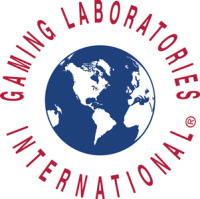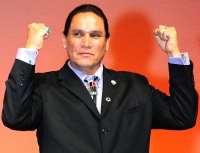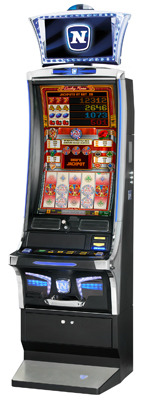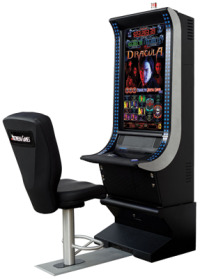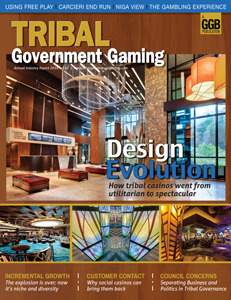
Tribal gaming reveals a compelling ascent.
Operators have authored a carefully sculpted, sometimes frenetic path to prominence. Despite rising competition and volatile economic cycles over the past three decades, tribes own a market share approaching $30 billion. Sovereign ideals, design excellence and careful planning have fueled gaming growth.
Three distinct eras, marked by a delicate juggling of business and cultural expression interests, have occurred since the 1988 Indian Gaming Regulatory Act enabled tribes to run casinos. It began simply with people flocking to properties, practically sight unseen, in the tribal equivalent of Field of Dreams: If one built it, people came, sprinting.
Design standards rose during the amenity-filled 1990s, gaming’s second market phase. Patrons could not simply be hosted. They would be wined, dined and wooed via comps, nightclubs and special events. Market saturation began forcing the need for engagement.
In the modern realm, age-group considerations gain more clout. Social media has produced young gamers with apps, phones and touch-screen speed-of-play.
Tribes embrace these factors to script their gaming presentation, from building size to design, as stakes rise. It was one matter for operators to build structures. Yet in a market replete with small properties and monoliths like Foxwoods, Mohegan Sun and WinStar (the nation’s largest casino in gaming-floor space), the trick is to keep them up. Tribes must know their message, their market and themselves.
Well-known architects and designers help sculpt the product. They blend natural elements, state-of-the-art materials and the wishes of tribal officials into buildings that reflects a property’s identity. Competition increases, but so do the tools of construction.
It’s been some ride.
Every Era Has A Theme
Minnesota-based Cuningham Group capitalized on the advent of tribal gaming. Since the late 1980s, it has produced projects of all sizes for its clients. Cuningham received several awards for an expansion project at Cherokee, N.C., which entailed more than half a billion dollars.
Tom Hoskens, Cuningham partner and vice president, witnessed the entire tribal architectural story.
“We were in at the beginning, and the first structures we did were, shall we say, a decorative box,” Hoskens recalls. “It was very simple. You had the option to create a signature porte cochere, because many of our properties were on the prairie. A large porte cochere could be something that popped up in the landscape and brought people there.
“That was the standard. Let the porte cochere make the statement. You could put some of these buildings up in six to nine months, which was very important. Back then, the whole idea was to get one up quickly. The faster you got open, the more money you made. Gaming was taking the country by storm. You had to get in the game as quickly as possible.”
Inside? Stick to a main gaming floor, restaurant and bar. Gambling drew people, food kept them on premises and time-on-device, a term that would later become significant in the gaming world, was still a loosely configured idea.
As the initial phase waned, mid-era tribal design sought staying power. Operators lured overnight patrons by creating a destination resort rather than a day-trip market. Amenities gained significance, from convention space and nightclubs to 24-hour food courts and gourmet restaurants.
From an architectural standpoint, the challenge was bringing it together.
“When you stay at a non-gaming hotel, you want to be near the checkout when you come down the elevator,” Hoskens says. “At a casino property, you are hopefully going to see the gaming floor. We developed a philosophy during that era and trademarked the term ‘Every building tells a story.’ You can give the property a look, feel and sound that is only part of that community. We discussed this with tribal leaders and created something they wanted.”
It bore fruit with varied levels of creativity. The Harrah’s Cherokee property in North Carolina, for instance, became draped in architectural symbolism.
“We took the layers of curve in the Great Smoky Mountains (where the property sits) and curved the rooftops,” Hoskens remembers. “The Cherokee also has seven clans. We have seven waterfalls coming off the porte cochere to symbolically represent that. That can be a metaphor for them.
“The main pathway of the casino has a series of curved, linear light elements throughout. The curved LED lights meander through the casino above the path. Adjacent to those lights are beads that are strung down. We shine lights on the beads. The lights move on the beads and the flicker of energy represents the wind (movement of light) and the wisp, two elements highly thought of by tribal leaders.”
The newest era incorporates a budding age group. Millennials become an increasingly high priority. Architects debate what forum to give people who like playing socially, against one another, rather than against the house. Gen-X lounges become a premier consideration for this group.
And then there’s nature.
Because of technological advancements and people spending more time inside buildings and cars, it is argued that the lack of biophilic activities strengthens the disconnect of humans from nature. A smart gaming design can address that.
“Many of our casinos are in gorgeous settings,” Hosken says, “allowing us to open the windows and have glass going through. This helps bring the nature inside. If you can create a facility with natural light and natural views, people will stay longer and play longer. Some casinos that don’t have that natural advantage have gone as far as to create monitors that show waterfalls and forests.”
Variations on Tribal Themes
Chief Boyd, a Cherokee tribal member with more than 50 years architectural experience, revels in the tribal design evolution. Thalden Boyd Emery’s CEO began working on bingo halls for his tribe in the 1960s. What transpired over the years astounds him.
“What excites me about Indian gaming is how the tribes are receiving the economic impact,” says Boyd, whose company is based in Tulsa, Oklahoma and has a long relationship with tribal properties. “They are getting money for which they can decide what to do. If you gain money from the federal government, for instance, you are told that you have to spend it on this or that.
“You also have to lobby and fight for that money by going through so many regulatory hoops. As a taxpayer, I understand that, but by the same token, it is wonderful to make money that you can decide how to use, say to build roads, improve water systems, build hospitals and clinics, etc..”
He cites $2 million the Cherokee Nation donated to public schools a few years ago. “It is wonderful to see what the tribes have accomplished; it’s dramatically different from the past,” he says. “It’s mind boggling.”
The reasons vary. Boyd advocates a mix of pragmatism and gaming savvy to complement cultural pride for the tribes. Each places its own level of cultural expression into the gaming mix.
“Some want the display to be in an area like a museum,” Boyd says. “Some want the overall structure to have a contemporary Las Vegas look. Some want it very tribal. That’s their decision.”
And it’s not an easy one. Tribal entities must balance the interests of cultural expression with the modern-day need to battle nearby properties.
“You are first trying to determine how to draw the gamer, get that person excited about the facility,” Boyd indicates. “You give them all the amenities they want from a property. Another aspect to consider is the tribal members themselves. You want them to believe that it’s not just a casino that draws customers, but that it is their casino. When a Cherokee tribal member sees all the Cherokee motifs out there, that’s a real positive for that person.”
The Buffalo Thunder casino near Santa Fe, New Mexico made such a declaration of heritage. It is operated by the Pueblo of Pojoaque organization and oozes the Pueblo theme, Boyd says. The front entrance is guarded by a fierce bronze dancer. The property contains artwork from every Native American tribe in New Mexico. Pueblo influence comes from the hotel rooms, floor, wall and glass patterns, along with the furniture.
“They spent a fortune on it,” says Boyd, whose company worked on the project.
While expression is one consideration, the bottom line is a different area to tribal officials. When the amenity-filled “middle ages” era emerged, concert halls, nightclubs and restaurants became high-profile investments. That idea became standard.
Yet the low-profile investments have long bolstered revenue, Boyd contends.
“We like to go after what we would call the low-hanging fruit,” Boyd says. “Parking garages have been an excellent return on investment for the tribes. Nearly everybody thinks it’s the price of land and the real estate value that will ultimately reward you, and I understand that. But a parking garage will pay off in less than two years. What’s wrong with that?”
Boyd considers movie theaters another strong revenue source. Build it once, recoup the money and receive several methods of return. One, charge for the movies. Two, provide a theater where one family member can drop off children or grandchildren while parents gamble. It is more attractive to them than simply hiring a babysitter, and will likely produce a post-gambling family activity like dinner.
Tribal Story a Bestseller
Memphis-based Hnedak Bobo Group has authored a success story along with Native American clients for many years.
“Indian Gaming has come a long way,” principal Dike Bacon asserts. “It’s a great story. Who would have guessed tiny casinos in smoky block buildings and Sprung structures called ‘bubbles’ would grow into a $28 billion industry?
“In the early days, customers were convenience gamblers with minimal expectations and even fewer demands. Nobody stayed overnight because there were no hotels. Nobody wrote critiques on the internet.”
It evolved into something more definitive, he says. Gamblers became gamers, the gamers became guests and “guest experience” entered the vocabulary during the second wave of tribal gaming design. It was the Roaring ’90s. Even during the mid-phase of tribal design, when consumer demands grew, companies could stay on top of it, according to Bacon.
“Customers became internet-savvy and expectations grew for things like better food and something called customer service,” Bacon recalls. “Databases were established and the demands for consistency and quality had a platform. Times were great. Growth was exponential. It was easy to be successful. The industry in those days was in large part ‘reactive’—simply give the customers what they want and they’ll keep coming back. Everybody won.”
That is, until the Great Recession flipped the scoreboard. Stock portfolios nosedived throughout the world. Real estate values plummeted. Homeowners were upside down and confidence waned. The casinos which streamlined emerged the strongest, and now their lessons, combined with updated technology and consumer needs for “new,” influence planning. Properties must present an updated feel without overreaching.
“As the customer continues to evolve and age out, gambling and spending habits will keep changing,” Bacon says. “Trends like experiential travel, luxury, and culinary diversity will become more prevalent. The proper and respectful incorporation of unique Indian culture and context will continue to be distinct differentiators. Non-gaming amenities will be a substantial growth engine, and expectations of higher quality and quantity will continue to rise. Lower price point but higher quality, chef- driven fast casual and food hall concepts will influence new F&B venues.”
These, and other trends, present a conclusion to Bacon.
“This,” he asserts, “is how Indian gaming will continue to be a great story. ”
Seminole Surge
Las Vegas-based Cleo Design has enjoyed a strong relationship with the Seminole Tribe of Florida for the past 16 years. Ken Kulas, who co-founded the company with Ann Fleming, smiles as he recounts its origin.
“Seminole Bingo,” as South Floridians dubbed the operation that pre-dated casino gaming, was already a hit when Kulas and Fleming met with tribal officials in 2000. It would become something more.
“We were escorted to a tiny single-story existing bingo parlor,” Kulas remembers. “We studied the existing design, knowing it was personal to the Seminoles, and we wanted to embrace the essence of the Native American tribe. The bingo room was to be relocated. Ann and I, along with others, were introduced to the new brand, a joint venture with Hard Rock Inc.
“The tribal members were gracious and humble, but they also knew something incredible was about to happen in their future.”
It did. Seminole Bingo would soon surge beyond the parlor era.
Visionaries saw growth potential via the expansion of gaming licenses. A megaresort was conceived to give Indian gaming a new definition. Amenities, gaming, guest rooms and design materialized.
By 2001, a master plan of what would become the famous Hard Rock was under way.
As tribal gaming moved forward, so did the debate over cultural expression. Proponents both for making it subtle and making it loud made good points.
“The design process is unique to each tribe,” Kulas says. “In the mid 2000s, most consuls and tribal leaders looked for an influence to the design that was special and relative to the specific tribe. The patterns in casino carpet or a decorative chandelier might have had a suggestive design element that was filled with pride and regional references. Indian gaming facilities all over the country began to adopt the formula.”
Just as Las Vegas found a competitor in Atlantic City, the gaming industry at large had to respect the tribal presence, he says. The modern Native American casino may ask its design team for a “Vegas-style” casino, but that term could also mean a high-level tribal casino, Kulas indicates.
“In the current day, you still see a very hands-on approach to casino development by a select group of tribes, but the trend to outsource the development process to professional teams specializing in achieving the tribes maximum potential is becoming more common,” Kulas contends. “This allows more focus and funds to be on tribal wellness centers, education, and the preservation of historical teachings and artifacts.”
What lessons has he drawn from watching this evolution?
“Our involvement shows us that when a tribal consul is still a contributing force to the development of the gaming resort, that sense of family is still very much visible, as in the days of the beginning Native American bingo parlors.” Kulas says.
Seeing Similar Paths
YWS Design & Architecture is an international design firm specializing in leisure environments in hospitality, gaming, retail, dining and entertainment. Founded in 2001, it has offices in Las Vegas and Singapore, strategically located in the world’s leisure and entertainment markets. The company also has been active in the tribal gaming world.
One of its most recent projects includes the Sandia Resort and Casino in Albuquerque, New Mexico. It has led a massive expansion of a distinctly New Mexican resort into a regional hot spot for the Sandia Pueblo Tribe. An ethereal spa experience starts the transformation. The earth is reflected in sandstone walls and the sky is reflected via dramatic skylights. It is situated at the base of the Sandia Mountains with expansive views of the river valley below.
Mike Stewart, the global director of design for YWS, believes the tribal ascent mirrors that of its non-tribal cohorts over the past three decades.
“I think this is how the majority, if not all, gaming markets evolved, including Las Vegas and Macau,” he says. “Las Vegas developed before other markets by taking large-scale risks in an effort to reinvent itself and increase the size of its market. Macau is in a similar position to Indian gaming, as they’re looking for the right combination of amenities to attract new customers while retaining their existing ones. That being said, other markets throughout the U.S. should continue to reinvent themselves as well, but not necessarily on that large scale.”
While there is no model for cultural expression, Stewart’s company has gained mileage from subtle implementation.
“I think this is really up to the tribe,” Stewart acknowledges. “Some of our clients don’t want their culture on display, while others do. We typically like to infuse the design with a story that is reflective of the culture in subtle ways.
“For example, using inspiration from indigenous materials, natural landscape formations, cultural stories, etc. but incorporating it without being blatant or obvious about it. This allows the tribe and the operators to feel a connection with the property beyond its functional use and promotes communication with customers explaining how the design reflects important elements of the tribe’s story and culture.
As for the future, Stewart believes tribal officials must remain visionaries, regardless of their ties to history.
“Existing Indian casinos are going to need to compete as integrated multi-use venues by including retail, more competitive and desirable food and beverage offerings, and compelling entertainment and hospitality venues,” he says. “It’s important that they do this in a way that is brand-appropriate, market-relevant and in a way that allows their customers in these different venues to interact and react with each other.”
And so it evolves. Tribal gaming design will continue to entice architects and designers, working within tribal parameters.
Their ideal scenario involves working with small decision-making bodies authorized to honor tribal wishes but operating apart from cyclical events like council elections. That creates faster project completion in an age of intense competition.
It will be interesting to see how that dynamic unfolds.
And when the next era of tribal architecture takes off.
